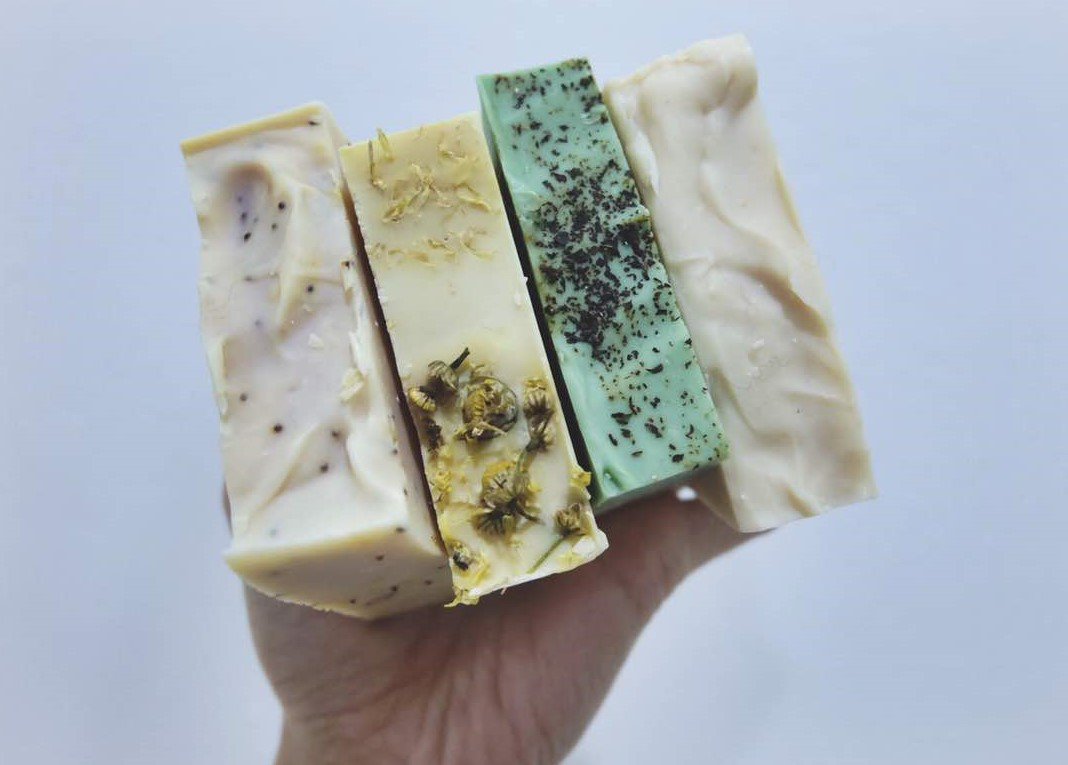When 28-year-old Nur Adilah Hamzah set up a quaint display of purple flowers and eleven types of handmade soap at the Made in Brunei Market Fair (MIBMF) two weeks ago, she wasn’t expecting much.
She had already debuted her handmade soap, covered up in neat paper packets, at a cube store in Airport Mall earlier this year, without much of a response.
With more than 200 vendors, spaced out over the open halls of Bridex, Adilah figured that Dear Daffodils – her solitary enterprise – would struggle to stand out.
“My brother was forwarding the MIBMF application invite on WhatsApp in our family chat,” she said. “It was only $50 to join – so I thought to myself – why not try?”
For MIBMF, she would tinker her a display a little and instead of pre-packing all the soap in opaque paper bags like she did at the cube store, she choose to neatly display four of each type.

The adjustment was enough to tip the public in her favour – and by 6pm, on the second day of the three day fair – Dear Daffodils had cleared all 150 bars of soap.
“It’s so beautiful,” said a pair of women who picked up four bars. “When will you make more?”
The line of soap – primarily cut into 80 gramme bars – carries strikingly intricate designs that bear more resemblance to marbled candles and cake than they do with the average, plain, off-the-shelf bar soap.

“I couldn’t believe my luck when it sold out so quickly,” says the petite 28-year-old, as we meet at the site of her soap operation – her parent’s house in Lumut.
A project engineer by trade, Adilah first dabbled in soap making towards the end of last year, after growing frustrated with store brands that she claims were not making her acne-prone skin better.
“I was looking for a more simpler solution – without all the chemicals,” she said. “I had already tried the brands from the store, and none were really helping. So I went online and found guides on making your own soap.”

Last September, she traveled to Singapore for a day long course – because if there’s a reason why most small health and beauty companies in Brunei have yet to take on making soap, it’s because you’ll have to handle lye – sodium hyrdoxide – that will burn your skin if you aren’t careful.
All soap – including those claiming to be organic – have to use lye. There’s no way around it.
Those who are fans of the movie Fight Club – the iconic scene where Tyler Durden pours lye over the narrator’s unprotected hand, would be wary of the ensuing effect.
But once lye mixes with a blend of oils, a process called saponification takes place that creates soap, and once it’s fully formed, there’s no more lye left.
Adilah has a host of mixtures, but her staples include coconut, olive and palm oils, shea butter and essential and fragrance oils.
“Once I’ve mixed it, I put it in the microwave to heat up, let it sit until it cools (about 30-60 minutes) and then pour it into a silicon mold,” she says.
Different mixtures are needed for soap that has multiple layers, otherwise a more solid block forms.
After the mold is filled near to its brim, Adilah takes out a fork to create swirls and shapes, and tops it off with different seeds, fruit peel and sometimes even glitter.
“Then the soap has to be dried out for four to six weeks,” she says. “If it’s any sooner that, the soap won’t be as firm, especially when it comes into contact with water.”
Personally, Adilah’s convinced of the efficacy of handmade soap as a remedy to her skin problems, but can she convince the masses that her soap is more than an artfully crafted creation?
“My colleagues, after they sampled it became my regulars,” says the 28-year-old smiling. “There are zero detergents. That’s the first difference between handmade soap and the standard commercial bar soap. The glycerin (often taken out for moisturizers) is also naturally intact in our soap. What we’ve done is narrow down soap to the most basic, wholesome ingredients, the way it should be. And we believe users will notice the difference.”

To get in touch or learn more follow @deardaffodils on Instagram.












